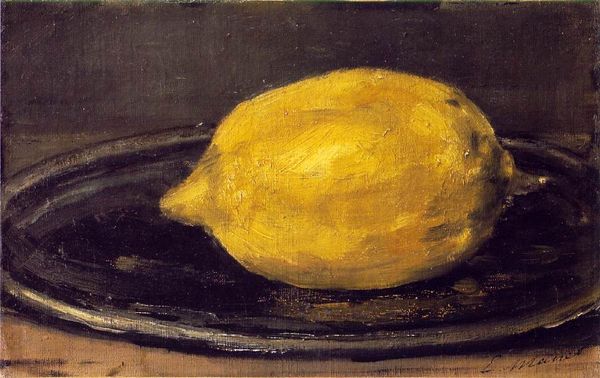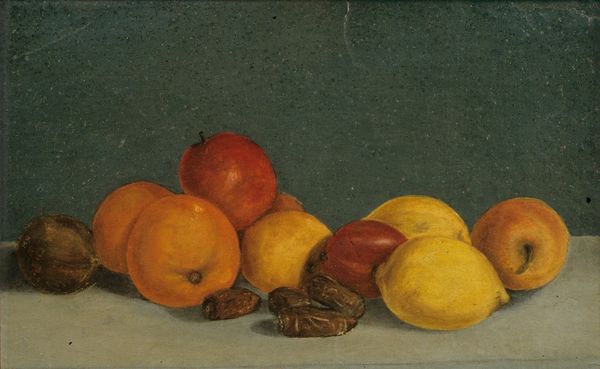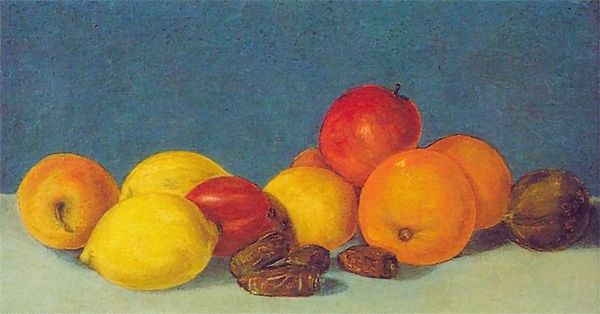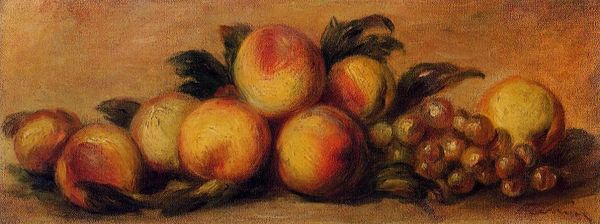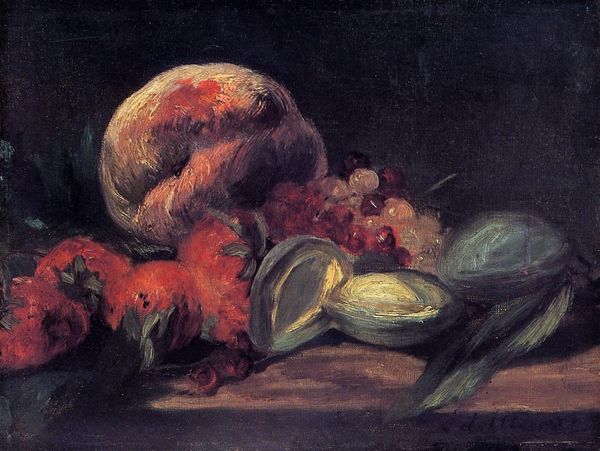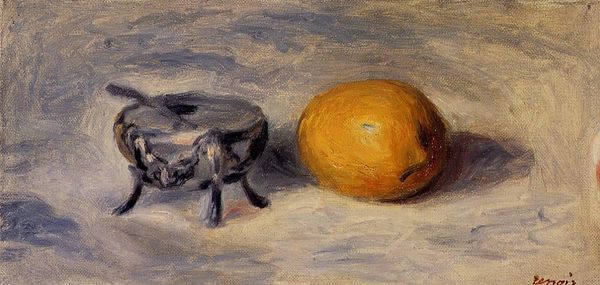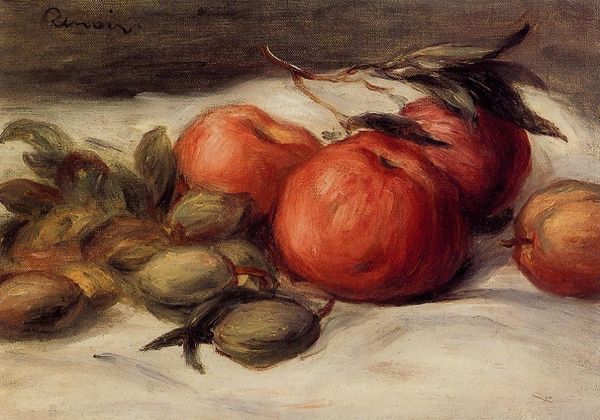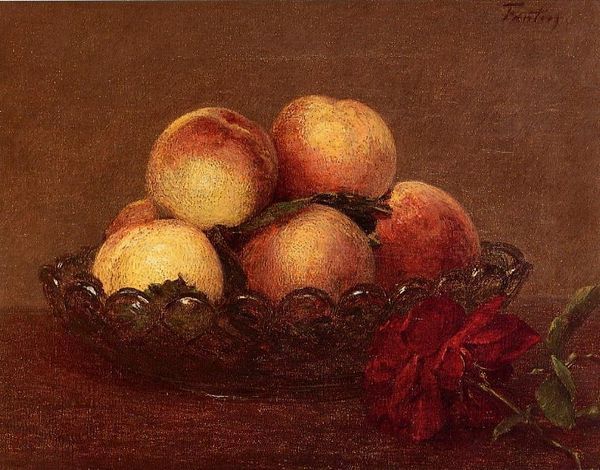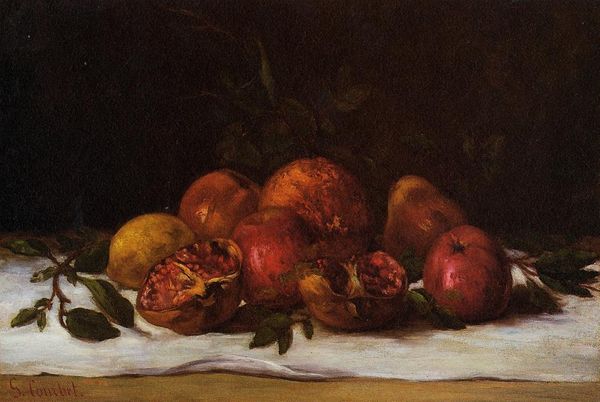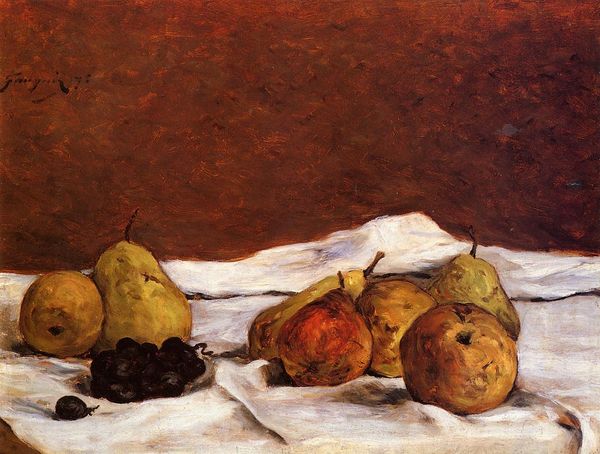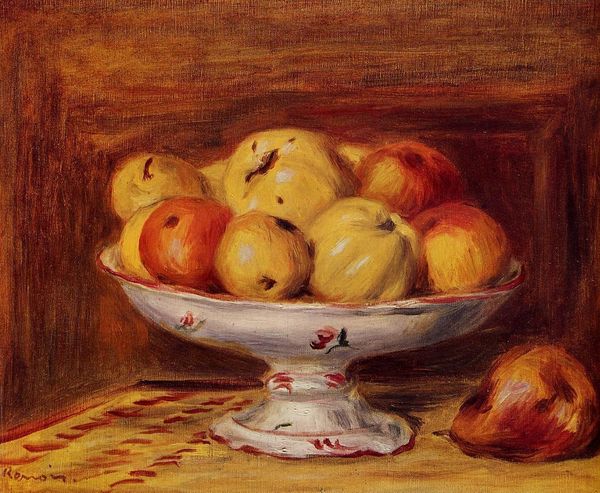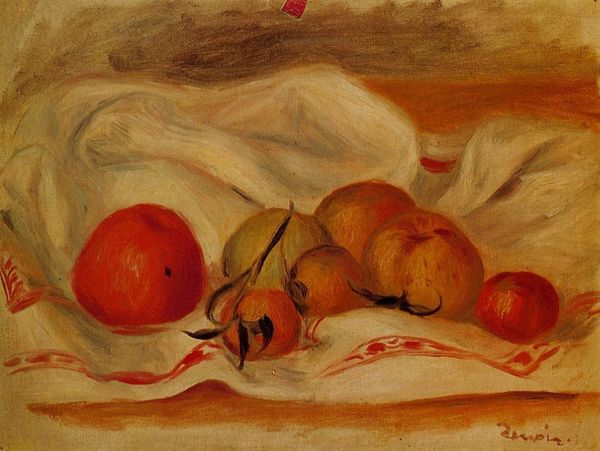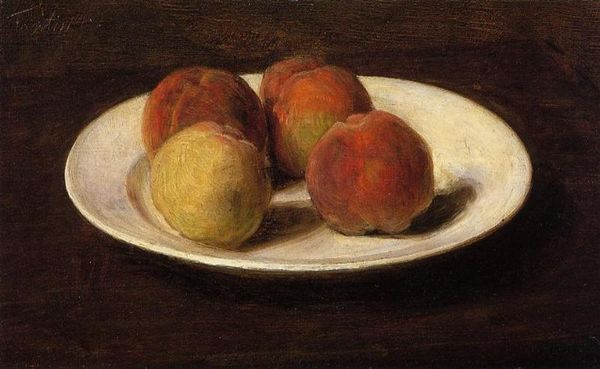
Copyright: Public domain
Curator: Looking at Fantin-Latour's 1869 oil painting, "Still Life", one is immediately struck by its simplicity. It’s just a melon slice on a draped cloth, yet there's an intimacy to it. Editor: Intimacy, yes, but also a sort of staged serenity. Doesn't the carefully placed melon half almost feel like a commentary on consumption and availability? It’s a fragment, already violated, laid out for display. What sociopolitical narrative are you finding here? Curator: The context of Parisian bourgeois culture in 1869 provides layers. Fantin-Latour wasn't just painting fruit; he was participating in constructing a specific vision of domestic life. Consider, for example, the gendered connotations of still life as a traditionally feminine space and what that might suggest. Editor: I agree the composition seems very deliberately composed to convey class status and societal norms, which certainly could engage those themes. Still, looking beyond art-historical positioning, I can’t help but see a quiet, almost melancholic scene. The color palette is muted, and the melon appears solitary, incomplete, like it already had a big bite taken from it.. There is almost the impasto suggesting its own history to consider. Curator: That’s a valid observation. This piece exists within the Realist movement, embracing common objects to depict modern life with a focus on social commentary. However, his adherence to academic painting—specifically precise brushstrokes and the traditional display arrangement—demonstrates a respect for art's accepted boundaries, and a sort of dialogue with those norms. It seems this artwork is aware of itself. Editor: Precisely, and isn’t it that awareness that makes it engaging still? Fantin-Latour uses the very language of academic art to offer commentary about Realism. The slice and the drapery could invite conversations regarding representation of class during this time period. Curator: Absolutely. The interplay of shadow and light emphasizes form, which invites closer examination to unpack how images create our perception of the every day in social spheres. Editor: So it's this dualism—the Realist object framed within academic conventions—that encapsulates the enduring fascination that "Still Life" holds. Curator: For me, it shows how artistic representations play a key part in constructing gender, class, and the everyday life and domestic expectations of that period. Editor: It leaves me pondering the deeper meanings residing within what appears simple and fleeting—a fruit slice on cloth that's become, and continues to become, emblematic of a complex society.
Comments
No comments
Be the first to comment and join the conversation on the ultimate creative platform.
